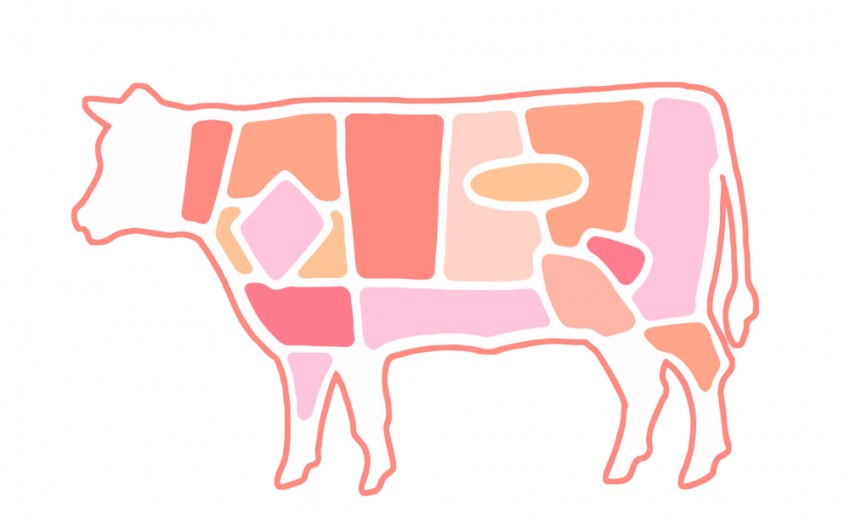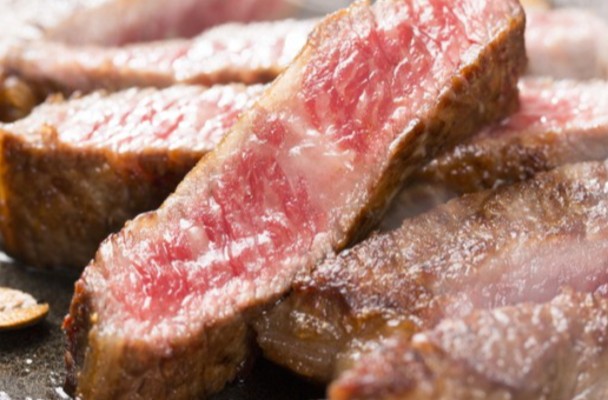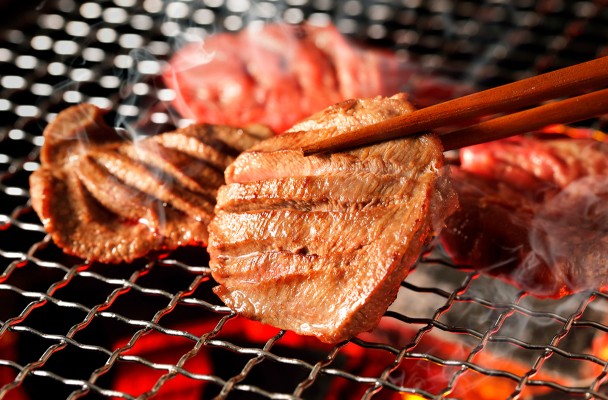
The direct translation for "Wagyu" is "Japanese Beef", however, did you know that not all beef that comes from Japan is Wagyu beef? All meat might be tasty, but if you want to try real Wagyu beef, be careful when reading the label or ordering at a restaurant. In this article, we're going to be going into detail about how you can know if the Wagyu beef is the real deal or not!
*If you make a purchase or reservation through links in this article, a portion of the proceeds may be returned to FUN! JAPAN.
What You Should Know First! Types of Beef You Can Eat in Japan

There are 3 main types of beef that you can eat in Japan, Wagyu, Japanese Beef, and Imported Beef. Each one is defined as follows:
Wagyu
This is beef from cattle that have been raised for the purpose of food, the 4 approved types of Wagyu are Japanese Black, Akage, Hornless, and Japanese Short-Horned.
- Japanese Black:Kobe Beef and Miyazaki Beef are the 2 most famous brands of Wagyu beef, and 90% of this beef comes under Japanese Black cattle. The marbled meat is its most characteristic part.
- Japanese Brown:Japanese Brown cattle are typically represented by Higo Cows and Tosa Wagyu. Its most characteristic part is the amount of red meat.
- Japanese Poll :Japanese Poll cattle are fattened within Yamaguchi Prefecture's Hagi City. A measly 3-4 shipments are made per month, making it a very rare product.
- Japanese Short-Horned:These are typically fattened in colder regions such as Hokkaido, Aomori, Akita, and Iwate Prefecture. They have lots of red meat.
Japanese Beef
This defines any other beef from Japan that does not come under the definition of Wagyu. Even if the cattle have been imported from overseas, as long as it has been raised in Japan for a period of time, it can be labeled as Japanese beef. Typical types of cattle you would find that come under this category is Holstein cattle and cattle that are unable to produce milk.
Imported Beef
As the name suggests, this refers to beef that has been imported from overseas to Japan. In Japan, you can typically find beef from America, Australia, and New Zealand.
The Types of Wagyu in Different Japanese Prefectures

Kobe Beef (Hyogo Prefecture)
There is no such thing as a "Kobe Cow". The Kobe Beef which everyone knows and loves is actually a Tajima strain of Japanese Black cattle, raised in Japan's Hyōgo Prefecture.
This is why it's usually called Kobe Beef. Furthermore, it has to come under the following rules set out by the Kobe Beef Marketing and Distribution Promotion Association listed below.
- Must be a Tajima strain Black Cattle Calf from Hyogo Prefecture
- Must be raised by someone recognized by the Kobe Beef Marketing and Distribution Promotion Association from when it is a calf to when it is shipped as meat
- Must be either an ox or cow that hasn't given birth when shipped to the meat processing center within Hyogo Prefecture
- Must clear the carcass judging
Miyazaki Beef (Miyazaki Prefecture)
While the title uses a blanket "Miyazaki Beef" term, there are actually 2 types of Miyazaki beef being Miyazaki Beef and Miyazaki Wagyu.
- Miyazaki Beef :This is Japanese Wagyu beef obtained from Japanese Black cattle that have been raised within Miyazaki Prefecture. It also must receive a grading of 4 or higher from the Japan Meat Grading Association. It must achieve a 4 or higher under 4 different categories being marbling, meat quality, luster and color, and fat luster and color, making this meat an extremely rare and high-quality product.
- Miyazaki Wagyu :This is a blanket term for any of the 4 types of Wagyu Beef listed above including crossbreeds that have been raised within Miyazaki Prefecture. This only refers to the cattle which have been raised the longest within Miyazaki Prefecture.
Omi Beef (Shiga Prefecture)
Japan's 3 largest and most well-known Wagyu Beef (Ōmi Beef, Matsusaka Beef, Kobe Beef) all have at least 100 years of history, however, Ōmi Beef has the longest among them with over 400 years of long-standing history.
During the Edo period of Japan, consumption of meat was strictly prohibited, however, Hikone in Shiga Prefecture was the only place nationwide that was permitted to slaughter cattle. After the Meiji period ended, many high-quality cattle seemed to gather in Shiga Prefecture from around the country. It's because of this that it's said Ōmi Beef has a special flavor.
Its characteristic is apparently said to be that the balance between meat and fat is perfect. Also, the meat itself is thin, soft, and melts in your mouth making it a very sought-after delicacy.
Matsusaka Beef (Mie Prefecture)
The majority of Matsusaka Beef is Tajima Cattle that has been raised by Matsusaka farmers for at least 500 days. To increase the cattle's appetite, it is said they give them beer and massage the cattle regularly. Matsusaka beef refers to Japanese Black cattle that have not given birth, and they must be registered within the Matsusaka Cattle Individual Identification Management System.
Here's a fun fact, whilst the true name for this beef is "Matsusaka", a lot of Japanese people misread the Kanji and call it "Matsuzaka".
Yonezawa Beef (Yamagata Prefecture)
The reason Yonezawa Beef became a branded cow apparently lies with a single British man. In the year 1875, a British man came to Yonezawa to teach English and was moved by how delicious the beef he ate there was, taking one of the cattle back with him to Yokohama when he left. It is said the delicious Yonzawa beef spread from there. Currently, the meat must adhere to the following rules to be considered Yonezawa Beef.
- Japanese Black cattle that have not given birth
- Recognized by the Yonezawa Beef Branding Association
- Is the cow which has been in the cattle barn the longest
etc. (The list continues with many specific requirements)
Wagyu Location

We have introduced the names and places where these types of beef come from, but if you want to know exactly where all of these things come from, take a look at this cute map we have created which can be found here.
👉[Tabelog] Book a Top Wagyu Beef Restaurant in Tokyo→Click Here
👉[Tabelog] Book a Top Wagyu Beef Restaurant in Osaka→Click Here




Comments